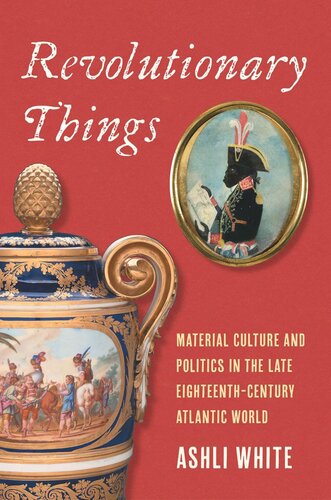

Most ebook files are in PDF format, so you can easily read them using various software such as Foxit Reader or directly on the Google Chrome browser.
Some ebook files are released by publishers in other formats such as .awz, .mobi, .epub, .fb2, etc. You may need to install specific software to read these formats on mobile/PC, such as Calibre.
Please read the tutorial at this link: https://ebookbell.com/faq
We offer FREE conversion to the popular formats you request; however, this may take some time. Therefore, right after payment, please email us, and we will try to provide the service as quickly as possible.
For some exceptional file formats or broken links (if any), please refrain from opening any disputes. Instead, email us first, and we will try to assist within a maximum of 6 hours.
EbookBell Team

4.8
64 reviewsHow objects associated with the American, French, and Haitian revolutions drew diverse people throughout the Atlantic world into debates over revolutionary ideals
“By excavating the power of material objects and visual images to express the fervor and fear of the revolutionary era, Ashli White brings us closer to more fully embodied, more fully human, figures.”—Richard Rabinowitz, author of Objects of Love and Regret: A Brooklyn Story
“In this important, innovative book, Ashli White moves nimbly between North America, Europe, and the Caribbean to capture the richness and complexity of material culture in the Age of Revolutions.”—Michael Kwass, Johns Hopkins University
Ashli White analyzes the circulation of objects associated with the American, French, and Haitian revolutions, arguing that the ideals of the Atlantic revolutions were contested not just in texts but also through objects. She considers how, as revolutionary things traveled from one site in the Atlantic to another, they brought people into contact with these political movements in visceral, multiple, and provocative ways. Focusing on a wide range of objects with transnational reach—ceramics and furniture, garments and accessories, prints, maps, and public amusements—she draws out the political impact of material culture for diverse populations. Enslaved and free, women and men, poor, middling, and elite—all turned to objects as a means to realize their varied, and sometimes competing, visions of revolutionary change.